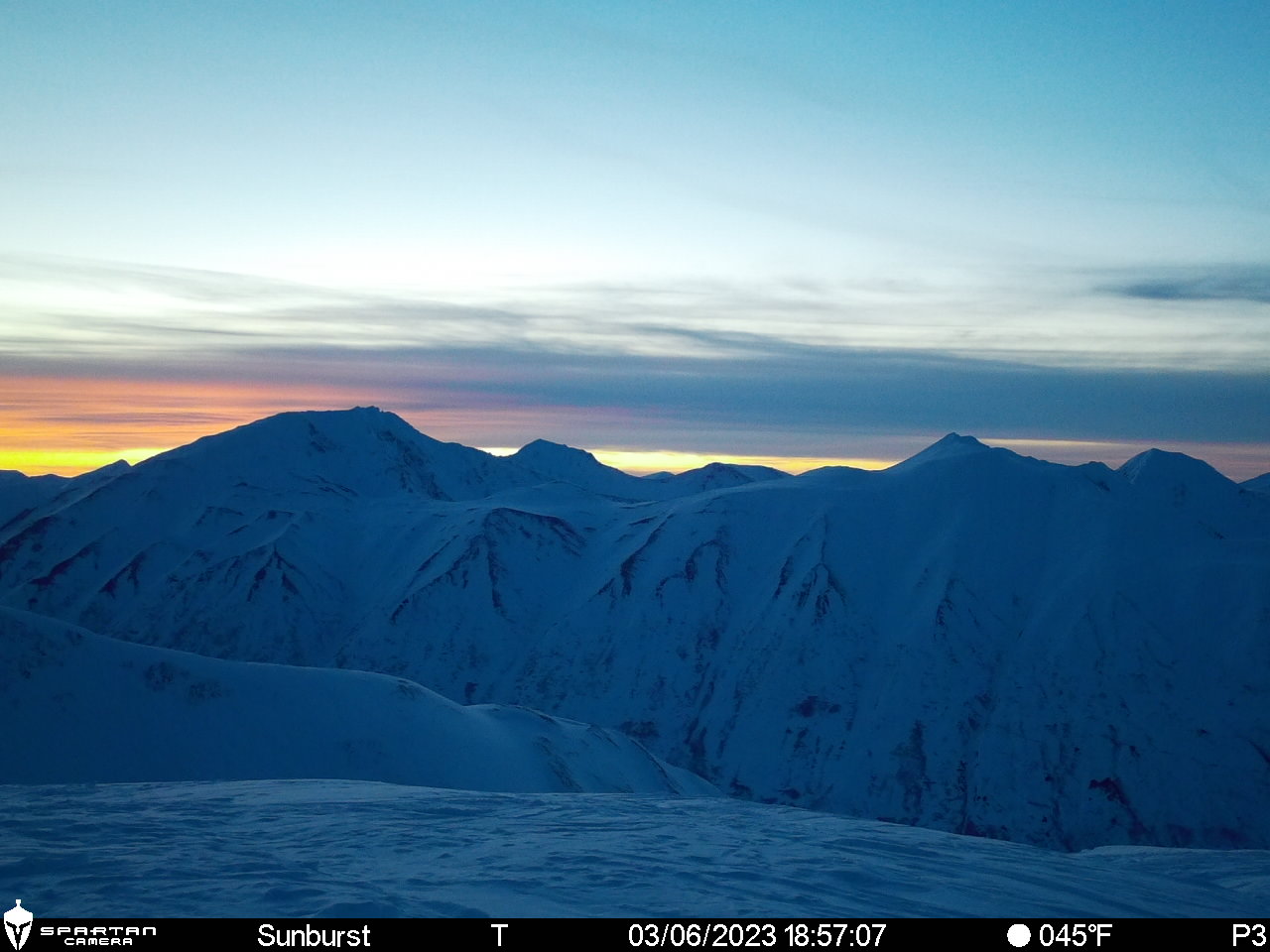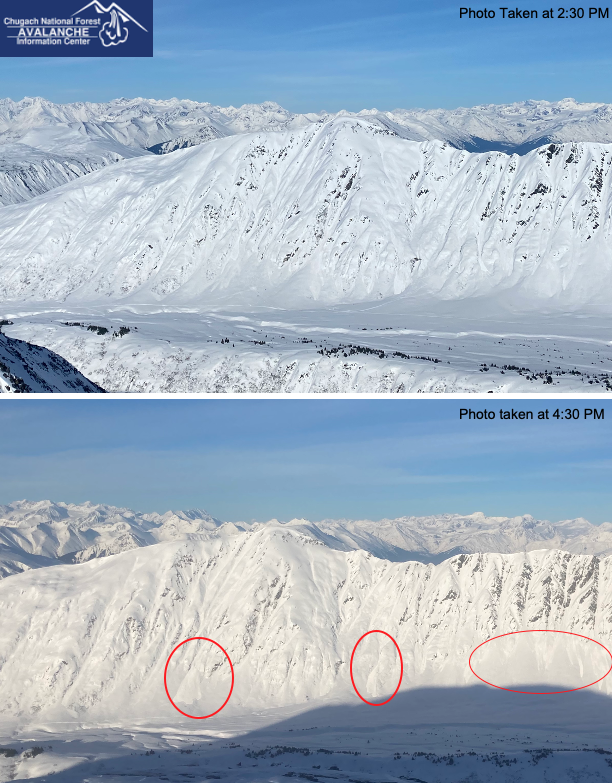It was eerily warm in the mountains last night, with the full moon lighting up the slopes and temperatures hovering around 35 F at upper elevations. Today we are expecting conditions to be very similar to yesterday. Except the temperature inversion is expected to be even stronger, potentially reaching 40-45 F between 3500-4500′. Despite the warm temperatures, the clear skies overnight probably allowed the snow surface to re-freeze after the surface melting yesterday. Wet loose avalanches releasing near rocks or trees and entraining loose snow below should increase in size throughout the day as the surface snow softens. These could become large enough to bury a person later in the day and are likely to be releasing naturally on steep southerly slopes receiving direct sun. Human triggered wet loose avalanches are also likely and it is helpful to have a plan to manage them by carefully choosing your terrain. Due to the unusually warm temperatures human triggered wet loose avalanches or roller balls are also possible on aspects that are not receiving direct sunshine.
To manage this avalanche problem it is important to monitor the snow surface conditions on a variety of aspects and be aware of any steep south facing slopes above you that could be heating up quickly. Wet loose avalanches can run a surprising distance down slope and if they pick up enough loose snow on the way down they can pack a serious punch. Typically you can switch to a shadier aspect to avoid wet loose avalanches, but with the unusually warm temperatures today it is possible that wet loose avalanches or roller balls could occur even on shady slopes.
Cornice fall is more likely with warm temperatures and strong sunshine, so it is important to be aware of any cornices overhead and try to give them a wide berth if you are travelling along a ridgeline. A big chunk of cornice falling also has the potential to trigger a slab avalanche on the slope below.
Glide cracks have been opening up over the past several weeks and the rapid change in temperature could make them more likely to release. These things have a mind of their own and can really release under any conditions, so it is important to be aware of any glide cracks overhead and try to minimize time spent underneath them.
 Fresh roller balls are a strong sign that the snow surface is heating up and wet loose avalanches are possible. Photo 3.6.23
Fresh roller balls are a strong sign that the snow surface is heating up and wet loose avalanches are possible. Photo 3.6.23
 Andrew and Megan re-installed the Sunburst webcam yesterday just in time to catch the sunset! We will get the images back up on the Sunburst weather page ASAP. Photo 3.6.23
Andrew and Megan re-installed the Sunburst webcam yesterday just in time to catch the sunset! We will get the images back up on the Sunburst weather page ASAP. Photo 3.6.23



